
It can be easy to forget when you go to a rally like Sturgis, where the whole town seems to be a series of pop-up vendors, motorcycle-only parking, and bikes traveling every road as far as the eye can see that you’re not at Disneyland for two-wheels and that people actually live there year-round. This is why I wanted to sign up for this year’s city-sponsored Ride with a Local event.
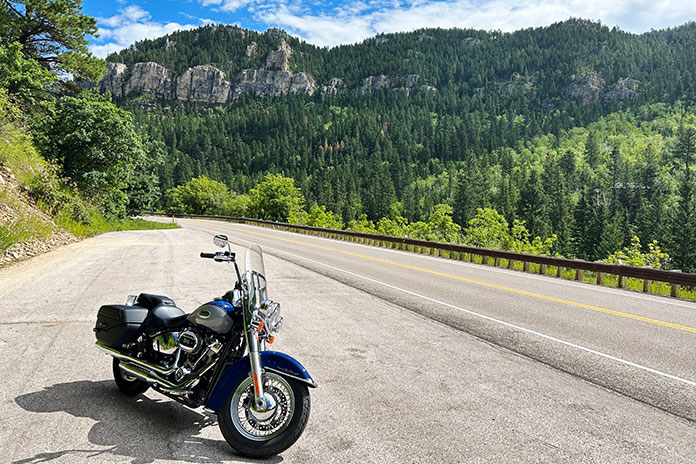
I was looking for stories of the people who live and work in the Black Hills. I wanted to meet people like our ride leader, Ron Rodriguez. In addition to his regular gig as production manager for a company in Spearfish that makes food-grade powders and blends, Rodriguez is a boxing coach for high school kids as part of the local Police Athletic League chapter, which provides a safe outlet for kids to reach their potential and to be involved in the Sturgis community.
We were also joined by Sturgis City Council member Aaron Jordan. Sturgis is a small town – just a little over 7,000 people when it isn’t flooded by 450,000 bikers – and Rodriguez’s fiancé is one of Jordan’s best friends.
Although I was looking for stories, there wasn’t a lot of talking on the ride. This part of the trip was about the amazing scenery in the Black Hills. If you haven’t ridden Spearfish Canyon, that alone is worth the trip to South Dakota (maybe even better during the off-season), and Vanocker Canyon between Sturgis and Nemo is another great ride.
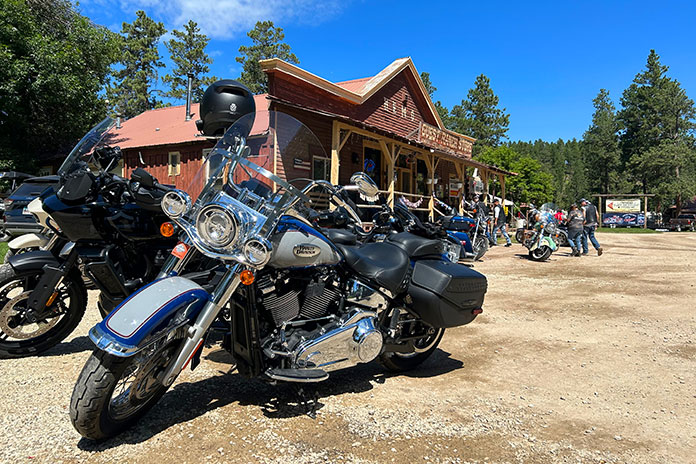
I reached out to Jordan after the rally was done to get his take on life in Sturgis, both during and after the rally.
Jordan was in the Army for 36 years and is now a part-time defense contractor. His parents and grandparents are all from South Dakota. He and his wife, who teaches eighth grade, raised all three of their kids in Sturgis, and he has been a member of the City Council for two years. He said he ran for the office because mentors in town knew he was retiring and wanted him to consider public service.
“For most of my life living in Sturgis, I’ve always known what’s going on in Italy and Russia and other countries, but I had no idea what was going on outside my front door,” he told me. “So I thought this would be a good opportunity to kind of give back to the community and get more involved and have a better understanding how government works and what we’re trying to do to continue developing our community for the future.”
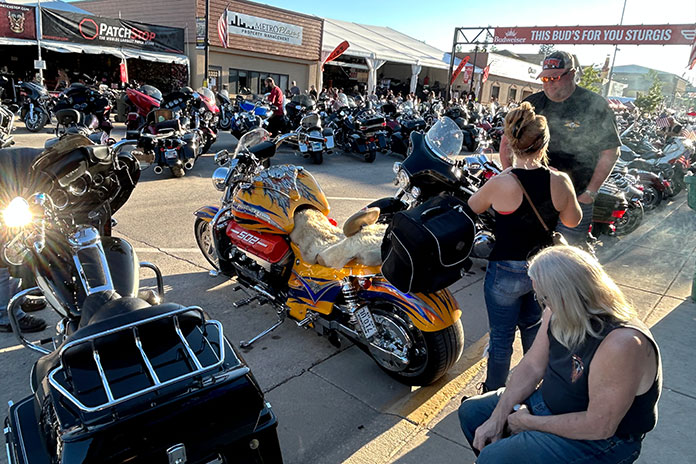
Jordan has seen considerable changes in the rally since his younger years, when it was pretty much all Harley-Davidson. His dad was a motorcycle enthusiast but was more of a Honda guy – Jordan still remembers riding on his dad’s Gold Wings – and he told his son about going into a bar in the late ’70s or early ’80s during the rally.
“You’ve seen how a lot of people are dressed at the rally,” Jordan said, “Well, here comes my dad – clean cut, clean shaven, wearing a white T-shirt with ‘Honda’ on it – and he told me, ‘Boy, I felt like I was a fish out of water.’ If you were to do that these days, you’d probably fit right in. It just feels like a different crowd than it was back then. … It felt like more of a rougher crowd when I was a kid.”
One memory in particular that stands out for him and that definitely wasn’t menacing was from a rally that took place when he was 10 or 11 years old and was walking around on Main Street.
“I walk by this tattoo artist, and I remember thinking, Oh, I didn’t know you could put a tattoo there.”
He told me that giving any more specific details may not be suitable for print, but he said that his early-adolescent self thought it was “pretty cool.”
Jordan said rally organizers have since moved to be more inclusive of different brands and styles of motorcycles, which suits him just fine. Although the MoCo provides bikes to some of the city staff to ride during the rally to help promote the brand – including the Pan America that Jordan had for our ride – he learned to ride on a Kawasaki and followed it up with a Honda and another Kawasaki that he had through high school and college.
His current main ride is a 2018 K 1600 Grand America, which he and his wife enjoy taking on tours into Wyoming and Montana, but he has also owned several BMW adventure bikes. As to the Pan America, he seemed to enjoy the ride that day, and he told me it is nimble and rides lighter than it actually weighs. I haven’t personally thrown a leg over one, but I’ve heard similar sentiments about the bike from others. American Rider EIC Kevin Duke reviewed the 2021 model, which you can check out here.
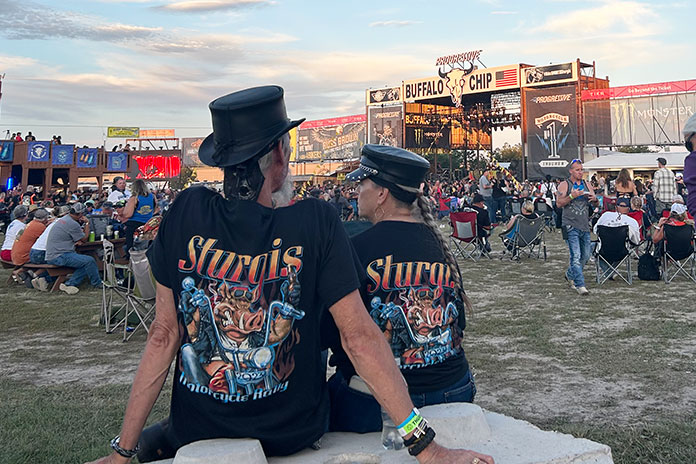
Besides the rally being more open to all types of riders and bikes, another change Jordan said he has seen over the years has been more people hauling their bikes and coming in RVs and campers. Along the lines of camping, he said the development of the Buffalo Chip and other large campgrounds in the area has helped with some of the previous problems with people camping just outside of town in the former city park. He said during the rally, residents called the park “no man’s land.”
“You went there at your own peril.”

However, despite the changes for the positive, Jordan said the rally is still a source of tension in the town and that some people don’t see the “bang for the buck” in tradeoff for the inconvenience factor of suddenly having half a million strangers in town.
“My sense, though, is that the majority of the people are comfortable and appreciate the experience of the rally and the benefits to our local economy.”
According to the South Dakota Department of Revenue, the 83rd rally provided approximately $1.45M in tax collections – which includes state sales tax, tourism tax, municipal sales tax, and municipal gross receipts tax – to the Black Hills area. Jordan cited service organizations that have benefited from this revenue.
“But it is a source of tension,” he said. “As a public servant, I’ve always thought about, ‘What can we do to make this less of a contentious issue?’ I think we could always do better at communicating the value of the rally and what the benefits are … and then hopefully most people in the community could see that and say, “Okay, well, maybe (the economic impact) doesn’t affect me personally, but it does provide value to the community, and that in itself is worth the inconvenience of not be able to go downtown like normal.’”

Obviously the rally is Sturgis’ biggest event, but Jordan said they would like to be known as an events town in general.
“We also have a Mustang rally. We have a Camaro rally. We might develop adventure bike-type rallies.”
He also mentioned how much forest service and BLM land surrounds the city, with trails for mountain biking, hiking, and horseback riding. He said when people think of Sturgis, he hopes they won’t just associate it with two-wheel motorized vehicles.
“Think about other aspects of the town in terms of other events and recreational opportunities. And that’s kind of our opportunity: to be able to expand and diversify a little bit and not just be all about the rally.”
But when it comes to those two wheels, Jordan said he appreciates events like Ride with a Local.
“Sometimes you get to take people along different routes that they may not have thought of and maybe build a personal connection with the community to that type of an event versus just showing up and maybe not having any opportunity to interact with the locals.”
American Rider’s full coverage of the 2023 Sturgis rally will be available in our October 2023 issue. You can subscribe to the print issues or digital edition here.



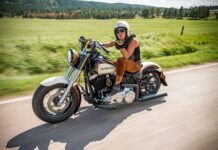














I don’t think that people appreciate the influx of cash a Rally brings. Someone wrote on Facebook that they don’t like the way bikes take over during Americade. My message was that the Rally is placed near the beginning of Tourist Summer season in Lake George and helps get money for improvements before regular Tourists pour in. “In the Hotel I stayed at they were putting down new carpet in the hallways,”I said, “Probably with the money they were making from the Rally.” That got me a “Thumbs Up” from the person with te initial complaint.